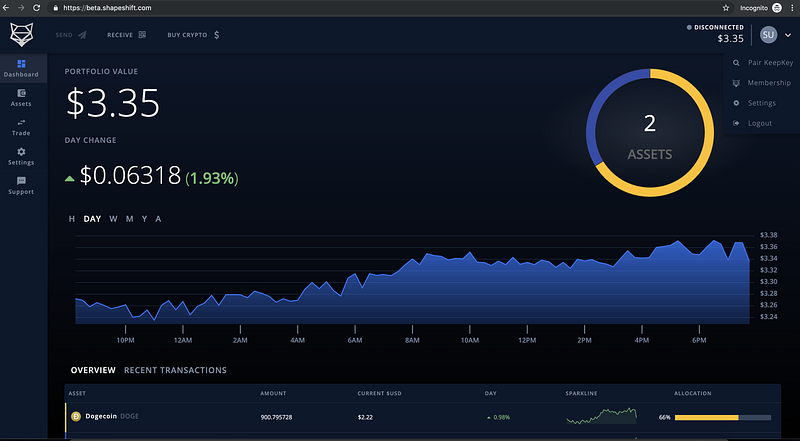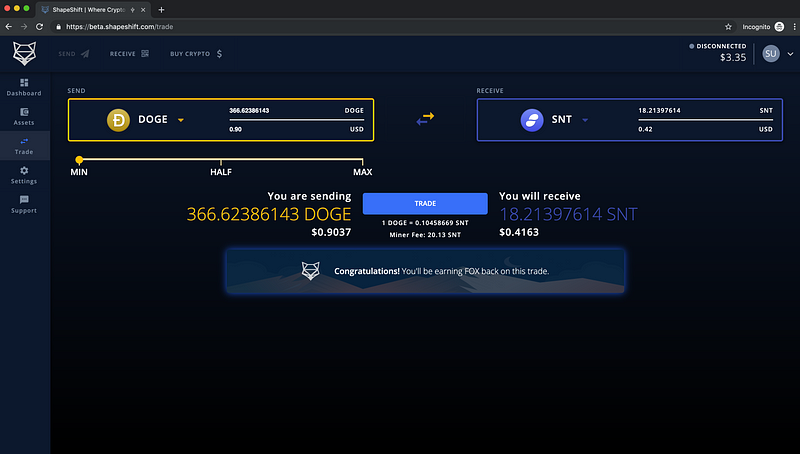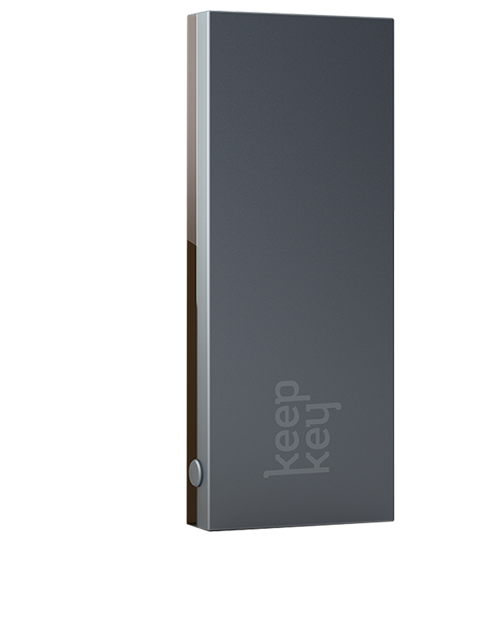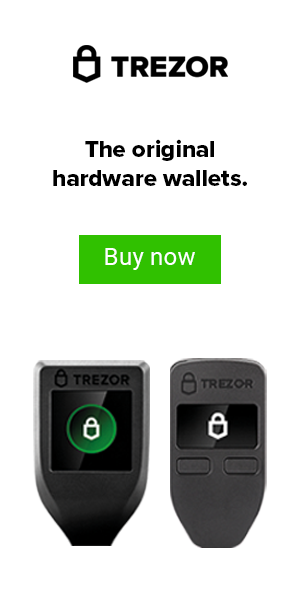Breaking: Bitcoin drops below $5,00 as Bitfinex Tether (USDT) drama continues. Holy Smokes. What a whirlwind of a few hours it’s been for the cryptocurrency market. As Ethereum World News reported, iFinex, the operator of both Bitfinex Tether Limited (the firm behind USDT), had come under legal pressure from a key U.S. legal entity. For those who missed the memo, here’s a recap: 

A document unveiled by the New York Attorney General’s (NYAG) office on Thursday has revealed that iFinex, the company behind both Tether (USDT) and Bitcoin exchange Bitfinex, is being sued. Per a lawsuit issued by official Letitia James, iFinex Inc, which is the company behind the two aforementioned crypto startups, promoted the “issuance, distribution, exchange, advertisement, negotiation, purchase, investment advice, or sale of securities” in New York State, which is illegal without the proper licensing and documentation. The suit has also revealed that Bitfinex purportedly sent $850 million to a Panama-based company, failed to secure the funds later, and went on to raid almost $1 billion of Tether’s cash reserves to satisfy it’s customers.
As a result of this news, BTC fell immediately (and a lot of altcoins with it). Within 30 minutes of the news’ publishing, BTC dropped from $5,550 on Coinbase to a low of $4,950 — a collapse of just over 10% — as Crypto Twitter spread this harrowing pieces of news within minutes. Altcoins across the board followed suit, with USDT falling to $0.98 on a number of exchanges. But, now, some are coming to the conclusion that this isn’t the end of cryptocurrency per se, leading to a recovery in the Bitcoin price to $5,200.
BITFINEX RESPONDS, BUT TRADERS FLEE IN PANIC REGARDLESS


About an hour after this news hit the Wall Street Journal and other outlets, a Bitfinex staffer going by “Garbis” released a statement on the company’s official Reddit forum. The employee explained that Bitfinex’s “team is reviewing the documentation,” and a statement will be released on the matter in the coming hours. In spite of this response, which was deemed lackluster and meaningless by most, users are revealing that they are withdrawing all their capital from the (not so) popular crypto platform.
Eduardo, a Venezuelan Bitcoin enthusiast that works for Purse.io, revealed that while he isn’t selling his BTC, he is withdrawing “what little” he had off the platform. Many others in the community made similar remarks, posting images of their withdrawal requests — balances and addresses redacted of course — to show that they are now skeptical of Bitfinex’s dealings. It is unclear whether or not the exchange will be able to keep up with these withdrawal requests. If this continues, we may see a massive exodus.


BOTTOMLINE:
This just goes to show that it’s only a matter of “when”, not “if” exchanges will reveal some mishaps and people start to panic. You do not have these issues when you have a hardware wallet, and you can even keep your USDT on a KeepKey device, which I’ve been testing in their new unified beta platform. I strongly recommend visiting our “SHOP” page at the top to get one now directly from these companies. Just remember as Andreas Antonopolous said: “Not your keys, not your bitcoin”.
What do you think? Do you think Bitfinex has made a big mistake like this for the last time? Please let me know in the comments!
Cheers,
The Crypto Renegade
NOTE: This post may contain affiliate links. This adds no cost to you but it helps me focus on giving as much value as possible in every single post by being compensated for recommending products that help people succeed.
You Might also like
-
Trezor Model T Review – Best Hardware Wallet Yet? (2020)
In this article. I am going to provide you with an in-depth Trezor Model T Review! The Trezor Model T Is the second generation device in the Trezor family and it came with a plethora of upgrades and a new capacitive touch screen for authorizing transactions, firmware updates, and entering in your security pin on the device itself versus the one the web application as with the Trezor One.
I also recently wrote an in-depth review of the Trezor One, which you can find HERE if you’re interested and I will be writing a comparison review shortly between both Trezor models.


Additionally, before I jump into the review of the Trezor Model T, I wanted to point out that I just wrote an in-depth guide on the 5 best ways to secure your cryptocurency in the form of a free e-book. It goes over some basic and advanced techniques to make sure that your crypto is the safest it can possibly be and provides you some tips and tricks to ensure your private keys stay protected forever. You can get that free e-book HERE.
Ok, phew, here we go, let’s get to the full review of the Trezor Model T Below! You will also find an attached video of the unboxing at the end. Let’s do this!
Trezor Model T First Impression And Unboxing


So when you first get the box in your hand, you’ll notice that it is substantially different than the Trezor One box. First off, it’s covered in plastic and then is a slide out box that separates into two parts (see video below). When you go to open the box, you’ll notice there are no security seals or holographic tapes on the box to promote anti-tampering and has a window on the box that shows the device in a display window.
It has a magnetic clasp that you can use to open the box where you will find the device sitting on a foam cushion that is surrounding the device and a blank black box with a green sticker right next to it.
Here is the reason why there is no security tape on the box when you first go to open it (unlike the Trezor One). The security tape is on the device itself covering the USB-C port on the bottom of the device and they have decided to bypass the security measures on the box. I understand why they made they choice and wanted to narrow down the security to the device itself from any side-channel attacks or MIM attacks. However, when you peel off the security tape, it purposefully leaves a very sticky residue on the device and it since it’s plastic, it is very difficult to get off without scratching it.
The touch screen is sleek and very bright, which is nice, but it is also very small. Even if you have average sized hands, you may have difficulty with entering in the pin-code and/or additional “25th seed phrase” as a password on the device. More on that later.
This is one of my biggest complaints as the device itself doesn’t look that good when you’re ready to use it and it it has a sticky film when you hold it and un-plug and plug in your device. I will say that this is the worst of your worries as the device is pretty solid and has a lot to offer in terms of security and functionality. The final thing that I noticed this device upon opening it up is it has a very sleek SD card slot that can be used for signing transactions offline and import them.
***CLICK HERE TO BUY TREZOR MODEL T FROM THEIR OFFICIAL SITE***
What Coins Are Supported?


I will leave a link to the official list of what Trezor has listed on their website HERE, but I will point out a few of the coins that this device supports that you don’t really see on other hardware wallets that stands out to me and is what I use on my device as well. The primary coins
NOTE: This device hold over 1,200 coins in total, but the majority of them have 3rd party wallets developed by either the development team for that coin specifically that can be connected, OR major third party wallets that hold hundreds of ERC-20 tokens, such as Mycelium and MyEtherWallet.
Just to name a few coins that are now supported on the beta wallet or (native app wallet) on the web app that is easy to manage and is unique to this hardware wallet is: HoloChain (HOT), Lunyr (LUN), Chainlink (LINK), and Polymath (POLY). They are adding Native support to new coins and tokens all the time, so make sure to keep your eye out for it!
Does this work with any 3rd party wallets?


Yes. Although I personally recommend using the native apps on the web application on the Trezor website. Why? Because it’s easily managed and located in one place. Additionally, because this wallet for managing is web-based you can easily take this wallet and manage your coins on the go without having download multiple wallets and setting it up and import it when you may not have access to the same computer.
This is safe to do because this hardware wallet is completely resistant to malware or any other viruses that may be present on unknown or public computers.
In regards to 3rd party wallets, there are a handful that are known to work and integrate directly with the Trezor Model T (and Trezor One) such as: MyEtherWallet, Mycelium, MyCrypto.com, and the newly announced partnership between Trezor and Exodus!
I will be doing an in-depth review and video on the Trezor user experience with the Exodus desktop wallet very soon! It looks very promising and they have hyped it up as a much better user experience than the standard web-based wallet, so we will see that review in the next week or so.
How Do I Set It Up?


Once you take the device and remove the security tape and unbox your recovery seed cards and the USB cable, you will open an internet browser tab and visit Trezor.io/start. This will take you through the process of downloading the “Trezor Bridge“, which is a small downloadable executable file that is required to use your wallet with the web app. Once you download this, you will follow the prompts on your device to download and install the latest firmware update.
NOTE: As a security measure, Trezor ships the device with no firmware installed to ensure that your device is activated properly when you set it up for the first time and the proper firmware will be activated with Satoshi Labs signed firmware. This ensures that no one can alter or tamper with the firmware of inject any malware in the device after it is shipped before it lands in your hands.
Once this firmware update is done, it will ask you on the web app to create a new wallet (recommended for new users) or import an existing wallet. You would only choose this option if you are trying to restore a previous wallet from on older recovery seed.
If you choose the new wallet option, it will prompt you to write down your recovery seed words on the card provided to you in the box and the words will display in succession on the device and will have you verify them in the correct order before the device is fully activated.
Once this has been created and you have decided if you want a 25th seed word as an extra layer of protection (I STRONGLY recommend that you do), you can now send, receive, and view the available coins in your dashboard!
***CLICK HERE TO BUY TREZOR MODEL T FROM THEIR OFFICIAL SITE***
Does It Support Monero And Ripple?


Yes and No. Let me explain. First, let’s talk about Monero support with the Trezor Model T. Although the firmware is setup to support this coin, there is currently no wallet that has been setup to use with it yet. This is currently in development and you will need to periodically check the Github page setup by Trezor to monitor the status of this, or await the newsletter that Trezor will inevitably send out once this is activated.
NOTE: I recently wrote an article HERE that goes over the 4 best Monero wallets, which includes hardware wallet support with the Ledger Nano S, albelt with the integration of a 3rd party wallet.


What about Support for Ripple (XRP)? Yes. Ripple has an easy to use native application that has recently been added to the web app for Trezor Model T. I have personally used and tested this and I am pleasantly surprised on how easy it was to manage. In fact, it was an even better experience than I’ve used with Ledger in regards to XRP.
How Does Trezor Model T Compare To Ledger And KeepKey?
Overall, this is a higher end wallet that supports many more coins than either Ledger or KeepKey. Additionally, it offers a touch screen for ease of use and independent security that is managed on the device itself. This includes being able to type in a custom password of “25th seed word” to access the device whenever it is connected or having a wallet being restored, in addition to the standard security PIN code.


This also means that it is more expensive. The current price of the Trezor Model T is 149 Euros or approximately $169 USD at the time of this writing. Ultimately, it depends on how many coins and WHICH coins you are specifically looking to hold on your hardware wallet.
If you are a beginner and you only want to hold the main higher market cap coins, like Bitcoin, Ethereum and Litecoin, then you really just need an entry level device, like the Ledger Nano S or The Trezor One.


However, If you want to be able to trade and swap coins directly on your hardware wallet without exposing your private keys, I would recommend going with KeepKey. They have a new platform (currently in beta, check out my in-depth review HERE) that allows you to trade on the ShapeShift platform while having your device connected and you never have to give up your private keys. This will be key if you are trying to be primarily trade, instead of just sit and hold.
***CLICK HERE TO BUY TREZOR MODEL T FROM THEIR OFFICIAL SITE***
Conclusion
So what’s the bottomline? I would recommend the Trezor Model T to anyone that is trying to expand their coin selection and are smart enough to know they need to keep their coins on a hardware wallet at ALL times. This wallet will continue to expand it’s coin support and they have already grown this support dramatically over the last 12 months. If there is a coin in particular that it currently doesn’t support on it’s web app, there is a STRONG chance that it is either supported with a 3rd party wallet you can integrate this with, or it will be natively supported very soon.
If you are just looking to buy and hold Bitcoin and Ethereum (or even Litecoin), you really don’t need a device as nice as this. At least not yet. As you understanding of this technology and your taste for new altcoins grows, you will probably want to expand into a new wallet, and in fact, it’s quite normal for people to have more than one active hardware wallet at once to diversify and protect themselves as well.
Additionally, you may want to consider using a device like CryptoTAG, as a metal backup to your recovery seed card, if you are holding enough funds that you want to have a backup of your backup. This makes sense for anyone that is holding more funds on their hardware wallet, than they actually paid for the wallet. This is actually not that much, so make sure you download the free e-book I mentioned above, so you can get the free tips above.
What do you think? Is the Trezor Model T the best hardware wallet out there today? Let me know in the comments below!
Cheers,
The Crypto Renegade
NOTE: This post may contain affiliate links. This adds no cost to you but it helps me focus on giving as much value as possible in every single post by being compensated for recommending products that help people succeed.
Post Views: 0 -
KeepKey Review: Is It Better Than Ledger? (2020)
In this article, I will give you a deep dive into the KeepKey wallet and provide you a review of my personal experience thus far with a keepkey review. I started using KeepKey about 3 years ago and boy has it come a long way. At first it was the simple bitcoin wallet that only supported about 6 coins, and was the easiest wallet to use at the time (including Trezor and Ledger). It’s selling edge was the physical wallet itself which is a nicer aluminum finish and clean and upscale look and significantly differed from the flimsy plastic Trezor and Ledger presented you out of the box.


As a result, it was priced as such, and many people would not pay more for a device that only supported 6 coins. In 2018, it started adding 3rd party wallet support, like MyEtherWallet and MyCrypto.com and ERC-20 tokens. In this review, I will go over what has changed since then and ultimately if this wallet is the best choice for you or not.
I also recommend you download my free e-book that I just wrote that gives you some expert tips on how to secure your cryptocurrency and ensure you are protected for the next bull run. You can click the link above to gain access now, and it will only help you on this crypto journey. Addtionally, I recently wrote a detailed review on the new ShapeShift platform, that will have elements of it woven into this review as they both utilize the KeepKey wallet to operate. Let’s get started!
CLICK HERE TO BUY KEEPKEY FROM SHAPESHIFT’S OFFICIAL SITE DIRECTLY
KEEPKEY REVIEW: WHAT COMES IN THE KEEPKEY BOX?
First off, they have a really solid presentation. The box is a quality box and is sealed by an anti-tamper sticker to indicate if the box has attempted misuse or access to it. Secondly, it comes with the following items in the rectangular apple-esque box:
-Nylon Woven USB to Micro USB cable
-2 Recovery Seed Cards
-Getting Started Guide
The device itself is rectangular and only has one singular button on the top right used for signing and authorizing transactions. This is why it can be defined as the simple bitcoin wallet and is mechanical in design. Overall, this is a non-nonsense wallet that is made up of solid, sturdy construction and is physically larger than the Ledger and Trezor wallets.
CLICK HERE TO BUY KEEPKEY FROM SHAPESHIFT’S OFFICIAL SITE DIRECTLY
KEEPKEY REVIEW: WHAT COINS ARE SUPPORTED?
Natively, this wallet in the current beta form supports over 40 assets with more on the way! Here is a current list of assets that are supported right now. Now let’s get into the nitty-gritty. For years, KeepKey only supported: Bitcoin, Litecoin, Ethereum, Namecoin, Dogecoin, and Dash. For a hardware wallet that needs to compete in this market place, that needed a serious upgrade.
Luckily, they have been making some AMAZING changes and not only added a ton of ERC-20 Support, but more importantly, they are revamping their entire platform to have one fluid, seamless application that integrates all of their core services (See my previous post for details on this). This is extremely powerful, and a decision that I believe will catapult them ahead of the competition. They are currently in a closed beta, and it is expected that they will be releasing this later in 2019. Stay tuned for news on this.
Some of the notable coins that have been added are:
-DigixDAO (DGD)
-Binance Coin (BNB)
-Dai (DAI)
-Maker (MKR)
-TrueUSD (TUSD)
CLICK HERE TO BUY KEEPKEY FROM SHAPESHIFT’S OFFICIAL SITE DIRECTLY
KEEPKEY REVIEW: HOW TO SETUP THE DEVICE


This information will be outdated soon, but I will leave a link to the current setup and initialization of the device as of June 2019 for most people here. I am more interested in talking about my experience with their new unified platform that will be released to the public shortly. Essentially, once you take the KeepKey out of the box and plug in the USB, it will prompt you to download the firmware updater and initialization steps once you login to your account. Currently, this is done on beta.shapeshift.com.
Once you have updated the firmware by plugging it in and holding down the single mechanical button as you disconnect and re-connect, it will process the update for you very quickly, usually within about 30 seconds. From here it will connect your KeepKey and there will be an animation in the top right of the dashboard letting you know it’s current status and then prompt you for the pin that is randomized every time it’s plugged in to ensure you have proper access to the device.
Once you’re validated, you can trade, view your accounts, and send/receive from your existing accounts and it’s a seamless process that will prompt for your PIN again to make any changes. I will leave a photo below for you to see the dashboard layout and it is very clean.


CLICK HERE TO BUY KEEPKEY FROM SHAPESHIFT’S OFFICIAL SITE DIRECTLY
KEEPKEY REVIEW: SECURITY
KeepKey has a true random number generator (TRNG) for it’s PIN interface for extra physical security. In addition to offline storage, KeepKey’s PIN code and number randomization makes sure that


1) Your wallet is secure from physical theft.
2) That a hacker couldn’t steal bitcoins from your wallet with malware.
KeepKey is an HD wallet, meaning your entire wallet can be backed up with the 12 words generated on setup. 12 words is the default setting, although KeepKey supports seed lengths of 18 and 24.
The seed is generated using entropy from both the device itself and the computer used for setup. The seed is generated offline on the KeepKey and displayed on the device’s screen. The device’s offline screen makes sure the seed is never displayed on an internet-connected device.
You can recover your wallet using the backup seed if your device is lost, stolen, or damaged. Recovery can be done in this new beta platform, but it has yet to be released on the current version. Make sure to keep multiple backups of your seed and use a metal recovery seed backup for extra protection.


The wallet’s screen allows you to sign and confirm the transaction on the device itself, so you can verify the address matches when sending on the web app and the device to prevent unauthorized bait and switches, but does not prevent phishing attacks.
CLICK HERE TO BUY KEEPKEY FROM SHAPESHIFT’S OFFICIAL SITE DIRECTLY
KEEPKEY AND SHAPESHIFT: USER EXPERIENCE (UX)
As you can see in the interface, besides the assets list on the left, most people like to trade within the app. All this is done within the app, so your private keys are never exposed online or to a 3rd party, which again, makes this new platform EXTREMELY compelling.
Additionally, unlike most exchanges you do not need pre-designated trading pairs that are usually defaulted to BTC. This means you can trade from altcoin to altcoin without having to trade back into BTC first, which will save you a ton on trading fees.
You can also buy crypto directly in the app via Wyre and can do a bank transfer that takes only 1-3 days and with only minimal fees. This is a huge advantage over Binance or other exchanges that charge exorbitant fees to have it done via a credit card and pay a lot more for that instant gratification. Again, when you do this, the private keys will go directly on your KeepKey so they are never exposed to the internet , even for a second.
Finally, here is a glimpse of the assets list. At the time of this screenshot, I only had 2 assets for testing and I haven’t tested this with bitcoin directly and dealt with DOGE and SNT at the time. I have since distributed that between about 9 different assets and have had a good experience with seamless trades that all end up on my hardware wallet, instantly after signing and authorizing a trade.
CLICK HERE TO BUY KEEPKEY FROM SHAPESHIFT’S OFFICIAL SITE DIRECTLY
KEEPKEY REVIEW – CONCLUSION
In the end, I still would take the KeepKey over the Ledger if I had to choose. The Ledger Nano S only holds 3 or 4 apps at the same time, and if you plan to expand or add more, you will have to remove and uninstall what you have to make room. KeepKey does not have this storage issue.
As mentioned above, with KeepKey will not give you this issue and you can trade assets very seamlessly and without the need to give up your private keys over top an exchange. This is a HUGE advantage and not one that any other hardware wallet can compete with. Having a non-custodial wallet is key and having one that is designed to never expose the private keys is even better.
The UX has been greatly improved and you can actually initiate a trade, sign the transaction on the device, and then unplug and off you go. You do not need to wait for the trade to take place, which is super convenient. Right now it costs $79 and is only 20 bucks more than the Ledger. It feels like it should be worth twice that since the quality you get is superior. Honestly, if you asked me which wallet should I choose a year ago, and is KeepKey is better than Ledger?
I would’ve said “No”. But, this new user interface and overall experience managing your assets all in one place and one screen, and not needing to install and uninstall several applications is unbeatable. Using their beta and testing their new platform has been a great experience and one that I would recommend to my closest friends and family at this point. Even if you are brand new and don’t have much experience. KeepKey is the best choice for a hardware wallet right now in 2019.
CLICK HERE TO BUY KEEPKEY FROM SHAPESHIFT’S OFFICIAL SITE DIRECTLY
***Leave a comment below and I will message you a coupon for 50% off for a limited time only!***
What do you think? Which hardware wallet is your favorite and why? Sound off in the comments below!
Cheers,
The Crypto Renegade
NOTE: This post may contain affiliate links. This adds no cost to you but it helps me focus on giving as much value as possible in every single post by being compensated for recommending products that help people succeed.
Post Views: 0 -
Bitpay Card Review: My Experience Living Off The Debit Card (2020)
In this review, I am going to cover my experience living off of the Bitpay Card. In 2017, I was hired to build a cryptococurrency hardware wallet for a prominent crypto company and I was paid directly in bitcoin and bitcoin cash. I needed to find a way to pay my bills with crypto in this legacy financial system that would not allow me to pay directly for my rent, groceries, gasoline, etc… This is when I did thorough research and discovered there were several crypto debit cards that existed.


Which one should I use? Which one works best and has the lowest fees? How much does it cost to get one? How easy is it to use? These were all questions I had when I first started researching these options and after doing a few weeks of research, it was clear that the best solution was to use the BitPay card.
I was already using BitPay to accept payment through this website when it was used for ecommerce, but I was unaware at the time that they had a crypto to Visa cash option that works for personal use. I was already happy with the experience I had using them as a payment processor, so I figured I would try their debit card for every day use. My experience and FAQ’s are detailed below!
HOW DOES THE BITPAY CARD WORK?
So here are the basic process of using the card from start to finish:
- Go to Bitpay.com/card and request a card. It will cost $9.95 as a one-time fee after you’ve filled out the application, which requires your personal details to send the card to.
- Wait 5-7 business days for the card to arrive (if you’re in the U.S.) It can take up to 21 business days for other countries.
- Once the card is received, call the 1-800 number on the front sticker to activate and set a PIN. Then go to your account to enter in the secret code sent in the letter to activate.
- Once activated, you are able to see your card available for crypto loads from the Bitpay mobile app and start using.
- Choose the wallet (either bitcoin or bitcoin cash) that you want to load onto the card, the choose the USD amount you want to add, then authenticate with your password and Face ID (if one is setup for extra security on the Bitpay wallet app)
- You’re done, money is loaded instantly and you will receive a confirmation email once you have completed the “Slide to Pay” function on the final screen.
- You are free to use this Bitpay card online, in person at any merchant that accepts Visa, or at the ATM.


My experience has been one that has shown this to be not only a very simple process, but also one that you can load money on in a pinch if you need to top off or load up your card because you don’t have enough funds. I have also experienced an issue where the card was declined once, but it was the merchant who I was using who said his bank was declining it. Once I called Bitpay’s card services, I was able to have them unblock it on their end and it went through perfectly.
WHAT CRYPTOCURRENCIES CAN I USE WITH THIS BITPAY DEBIT CARD?


Currently, the only two cryptocurrencies that can be used to load up the card on the prepaid Visa is Bitcoin (BTC) and Bitcoin Cash (BCH). There have been plans to add more in the future, but for the time being, these are the only coins that are supported on Bitpay’s platform for debit card usage. There have been rumors that Ethereum (ETH) may be the next coin added for further altcoin support, but that has not been confirmed by the company.
HOW DO I PUT MONEY ON MY BITPAY CARD?
Once you have the card activated and you have linked your card account online, you will see the card option to “Add Funds” on the Bitpay Wallet App. Once you click on this, you can select the USD amount or toggle to the BTC or BCH side to calculate the exact amount you want to load. This will have you select the wallet you want to fund with in the drop down menu. Once you select the wallet, you will confirm the total and continue with “Slide To Pay” at the bottom, and will load instantly!
(PRO-TIP: If you are concerned about price fluctuation, you can keep your funds on your wallets and only top off the card at the exact moment before you purchase. This gives you flexibility in trying to monitor and maximize the price volatility in your favor!)


CAN I USE THE BITPAY CARD TO WITHDRAW CASH FROM AN ATM?
Yes. I have used this in a pinch where a card is not accepted when I went to a concert venue, however, keep in mind you will incur a $5 fee for ATM withdrawals and that does not include any ATM fee’s the machine you are using will incur. In some cases, it is not worth it to use this feature, but it is nice to know you have the option if it’s required.
It is also nice to know that when using a debit option at a merchant, you can easily choose the “cash back” option as a free way to get cash back, but that is usually limited to $100 dollars. This is a work around I would frequently use if I knew I needed to have some cash on hand for certain occasions and is nice to avoid those fees.
CONCLUSION
I was able to successfully use this to make most purchases I needed to make for the past 2 years. There are some bills that people pay that required ACH and will not take a debit or credit card. IN these instances, I was able to use Coinbase to as a crypto to fiat off-ramp, but I avoided using this as much as possible as the fees were not helpful, and I liked the idea that I could use crypto top make payments in the real world, without a hitch.
I also negotiated a way to start paying rent and other bills via Venmo, which was a nice workaround top using ACH. I was so hell-bent on using crypto as a viable payment source to pay my living expenses, that I went out of my way to make this happen. Any funds that I did not load onto my card, I only kept a little of it on the Bitpay wallet app and then kept the savings (as everyone should) onto my KeepKey hardware wallet.
If you are unfamiliar of the best practices for securing your cryptocurrency the right way, I will leave my link here for my FREE E-BOOK that details the top 5 ways to secure your cryptocurrency, and I recommend giving it a look, as it’s free.
All in all, this was a viable solution to live on, but I understand that some people are unable to use this in their particular country or their particular circumstance. If you live in any European or Asian countries and would like the option to use a crypto debit card, you can also try Wirex.
The Bitpay card is an option that does have a monthly fee, but it primarily used on that side of the world and has a similar user experience. I would recommend using this card for ANYONE that wants an option to “cash out their crypto” in a moments notice that would prefer not paying any exchange fees and needs it to happen within seconds.
What do you think? Are there any better crypto debit card options that you have used? If so, let me know in the comments below!
Cheers,
The Crypto Renegade
NOTE: This post may contain affiliate links. This adds no cost to you but it helps me focus on giving as much value as possible in every single post by being compensated for recommending products that help people succeed.
Post Views: 0















